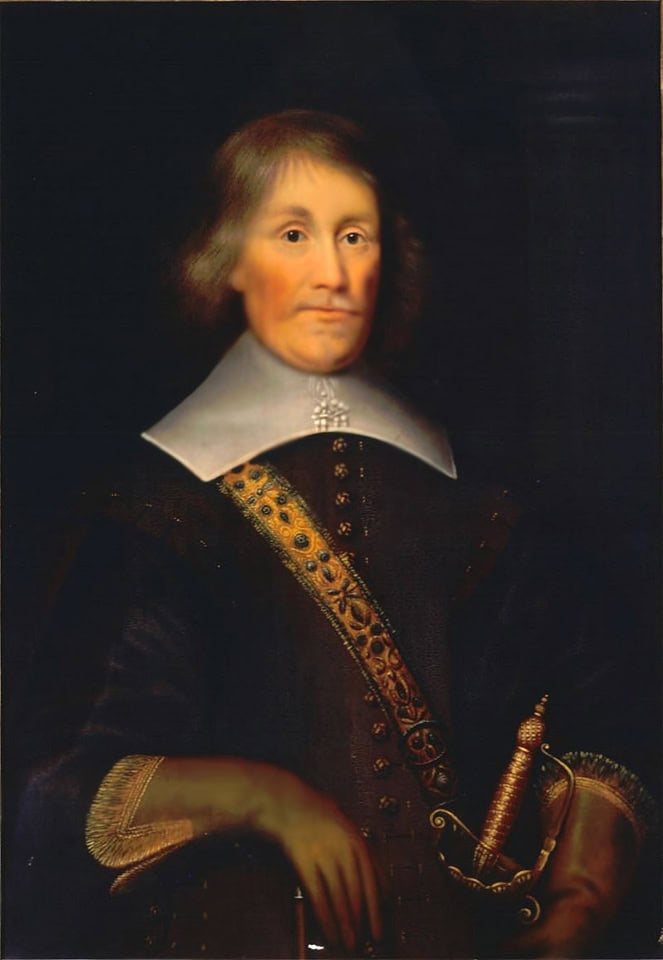By Inna Babitskaya
One of the key persons in the establishment of the Massachusetts Bay Company and Colony was Rev. John White (1575–1648), called the Patriarch of Dorchester and the Founder of Massachusetts, who never visited New England. Rev. White served as rector of the parish of Holy Trinity in Dorchester. After learning about the Pilgrims’ expedition, he became the leading person in obtaining charters for the Dorchester Company, the New England Company and the Massachusetts Bay Company. In March 1624, due to his efforts, the Dorchester Company was organized.
White organized the supplies’ delivery to the colonists of Naumkeag (Salem). He planned to establish a colony for the so-called non-Separatists and thought that Naumkeag would be the best place for it. In order to obtain finances, he had to fight against the city administration and wealthy people, whose desire to acquire more property and wealth contradicted his purely religious motives. Eventually, he founded the New England Company, which included the members of the Dorchester Company.
On March 4, 1628/29, White obtained a royal charter for the company. On March 19, 1628/29, the Council for New England gave a land grant to a new joint-stock company that was called “The New England Company for a Plantation in Massachusetts Bay.” Merchant and politician Matthew Cradock became the company’s first manager, and Sir Richard Saltonstall (1586–1661) was its main shareholder. The company received a grant for an area between the Charles and Merrimack Rivers, from “the Atlantic and Western Seas and Ocean in the eastern part to the South Sea in the western part.” Cradock immediately began to recruit settlers and buy essential supplies for sea travel and settlements. In February 1628/29, the New England Company began to prepare ships for the future voyage.
White’s close friend John Endicott was employed by the company to be the first governor of the colony in Massachusetts. White right away ordered two small ships, Peeter and Happy Entrance, sent with supplies.
On June 20, 1628, the Abigail left for New England with John Endicott and 100 new settlers. In 1628, they landed at Naumkeag (future Salem), which had been founded by fishermen, who moved there from Cape Ann in 1626.
In order to make their settlement easier, the company created some kind of “warehouse” where the colonists could get clothes, fabrics, food and other supplies. In 1628, with Endicott’s group, the company sent clothes “sufficient for one hundred men, including three hundred suits of clothes, four hundred shirts, and four hundred pairs of shoes. Two hundred of the suits of clothes… There were a hundred waistcoats of green cotton…, a hundred Monmouth caps, five hundred red knit caps, milled, and one hundred black hats, lined in the brows with leather… The stock contained four hundred pairs of knit stockings, ten dozen pairs of Norwich garters, three hundred plain falling bands, two hundred handkerchiefs and a stock of sheer linen… to make up other handkerchiefs. Scotch ticking was supplied for beds and bolsters, with wool to put therein. The blankets were of Welsh cotton, and fifty rugs were sent over to place over the blankets, while mats were supplied ‘to lye under 50 bedds aboard shippe.’”
Rev. White chose and approved Francis Higginson (1588–1630) and Samuel Skelton (1592–1634) as the colony ministers. Higginson joined the Massachusetts Bay Company in 1628. Higginson and 350 Puritans, many of whom belonged to his own congregation, sailed to New England in May 1629. Because of the pirate threat and the undeclared war with Spain, all ships (George Bonaventure, Four Sisters, Lyon’s Whelp, Mayflower, Pilgrim and Talbot) were armed with cannons and guns. They arrived in Salem Harbor in June 1629. The Higginson Fleet brought with them 115 heads of cattle, as well as horses and mares, cows and oxen, 41 goats and some conies (rabbits), along with all the provisions needed for setting up households and surviving.
According to his own experience, Rev. Higginson advised the future emigrants how to prepare for the voyages: “…be sure to furnish yourselves with things fitting to be had before you come: as meale for bread, malt for drinke, woolen and linnen cloath, and leather for shoes, and all manner of carpenters tools, and a great deale of iron and steele to make nails, and locks for houses, and furniture for ploughs and carts, and glasse for windows…”
Higginson even created “A catalogue of such needfull things as every Planter doth or ought to provide to go to New England” in which he included the food supplies for the voyage (“8 Bushels of meale, 2 Bushels of pease, 2 Bushels of Otemeale, 1 Gallon of Aquavitae, 1 Gallon of Oyle, 2 Gallons of Vinegar, 1 Firkin of Butter; also Cheese, Bacon, Sugar, Pepper, Cloves, Mace, Cinnamon, Nutmegs and Fruit”) and for a year. He also mentioned the necessary kitchen items, clothes and household stuff. Understanding the possible dangers on the new land, Higginson did not forget about the armor, including in his list of necessities a long piece, a sword, bandoleer and ammunition.
To be continued…
(Inna Babitskaya is a Malden Historian and a Member of Malden Historical Commission and is the Author of historical books “From Maldon to Malden,” “Time of Converse” and “Fellsmere Park – Emerald of Malden.”)
See more photo highlights at: www.Facebook.com/advocate.news.ma



